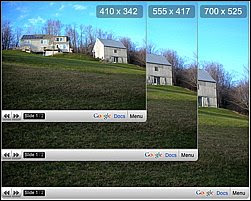 This past Friday I set up a teleconference for all of my presenters who will be speaking at the IQ Visual Mapping Conference to be held on October 3, 2008 in the Greater New York Metro Area. Before I set up the meeting I wanted to be assured that everyone could have access to a high quality audio teleconference. I scoured the internet for such a service and came across InstantConference. InstantConference is a free teleconference service with no startup or user fees. The only costs associated with it are long distance fees which your participants will incur. With today's phone calling plans this should not be too much of a deterrent. Once you set up an account you are given a phone number and access code and a pin number to get you started. Before the teleconference I did a run through with Arjen ter Hoeve in the Netherlands who was able to access the phone call via SkypeOut. It worked famously and so now I was ready to go. I figured if Arjen was able to log in with SkypeOut the rest of my participants would have no trouble.
This past Friday I set up a teleconference for all of my presenters who will be speaking at the IQ Visual Mapping Conference to be held on October 3, 2008 in the Greater New York Metro Area. Before I set up the meeting I wanted to be assured that everyone could have access to a high quality audio teleconference. I scoured the internet for such a service and came across InstantConference. InstantConference is a free teleconference service with no startup or user fees. The only costs associated with it are long distance fees which your participants will incur. With today's phone calling plans this should not be too much of a deterrent. Once you set up an account you are given a phone number and access code and a pin number to get you started. Before the teleconference I did a run through with Arjen ter Hoeve in the Netherlands who was able to access the phone call via SkypeOut. It worked famously and so now I was ready to go. I figured if Arjen was able to log in with SkypeOut the rest of my participants would have no trouble.On the day of the teleconference I dialed in and waited patiently as one by one my colleagues announced their presence. Soon Kyle McFarlin, Chuck Frey, Wallace Tait, Arjen ter Hoeve, Adam Clayman, and myself were engaged in our conference. The audio quality was fantastic and as the conference leader with an account, I was able to have the service record the conference session-this was free as well. This was a great feature since Stephanie Diamond was unable to make the teleconference. The group teleconferenced for over an hour talking about the October 3, 2008 event. All of us are really jazzed up about the event and are looking forward to sharing more information about the conference over the next couple of weeks. Stay tuned for some really exciting developments!
After our teleconference meeting was over within 2 minutes I received an email with summary information about who was in attendance and how the long the meeting ran. In about 15 minutes I received another email with a link to the recorded session which is formatted as an MP3 file. I was able to download the recording and listen to it with iTunes. I forwarded the email to my colleague, Stephanie Diamond who were not able to make it and she was able to listen to the entire meeting- pretty cool. I was totally amazed with the service and would highly recommend it for anyone that has to ad hoc teleconferences. (Note: It would make for a great way to do recorded interviews or podcasts.) Try it out and let me know what you think




















